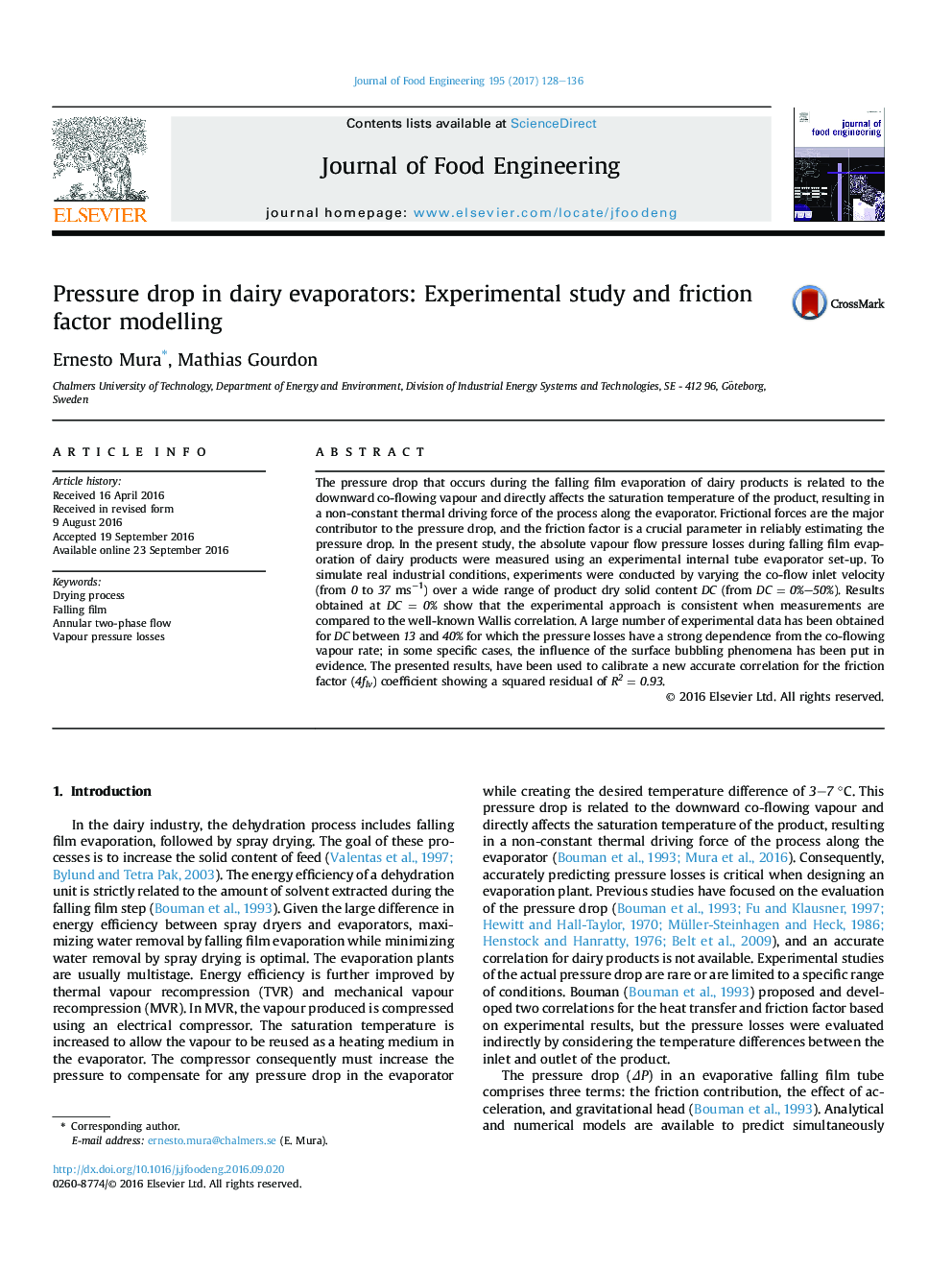| Article ID | Journal | Published Year | Pages | File Type |
|---|---|---|---|---|
| 6477598 | Journal of Food Engineering | 2017 | 9 Pages |
â¢Pressure drop in falling film evaporation of dairy products is experimentally studied.â¢The experimental work is performed by means of an industrial-scale apparatus.â¢A new correlation (R2 = 0.93) for the friction factor is proposed.â¢The correlation cover a large range of conditions at different dry solid content.
The pressure drop that occurs during the falling film evaporation of dairy products is related to the downward co-flowing vapour and directly affects the saturation temperature of the product, resulting in a non-constant thermal driving force of the process along the evaporator. Frictional forces are the major contributor to the pressure drop, and the friction factor is a crucial parameter in reliably estimating the pressure drop. In the present study, the absolute vapour flow pressure losses during falling film evaporation of dairy products were measured using an experimental internal tube evaporator set-up. To simulate real industrial conditions, experiments were conducted by varying the co-flow inlet velocity (from 0 to 37Â msâ1) over a wide range of product dry solid content DC (from DCÂ =Â 0%-50%). Results obtained at DCÂ =Â 0% show that the experimental approach is consistent when measurements are compared to the well-known Wallis correlation. A large number of experimental data has been obtained for DC between 13 and 40% for which the pressure losses have a strong dependence from the co-flowing vapour rate; in some specific cases, the influence of the surface bubbling phenomena has been put in evidence. The presented results, have been used to calibrate a new accurate correlation for the friction factor (4flv) coefficient showing a squared residual of R2Â =Â 0.93.
